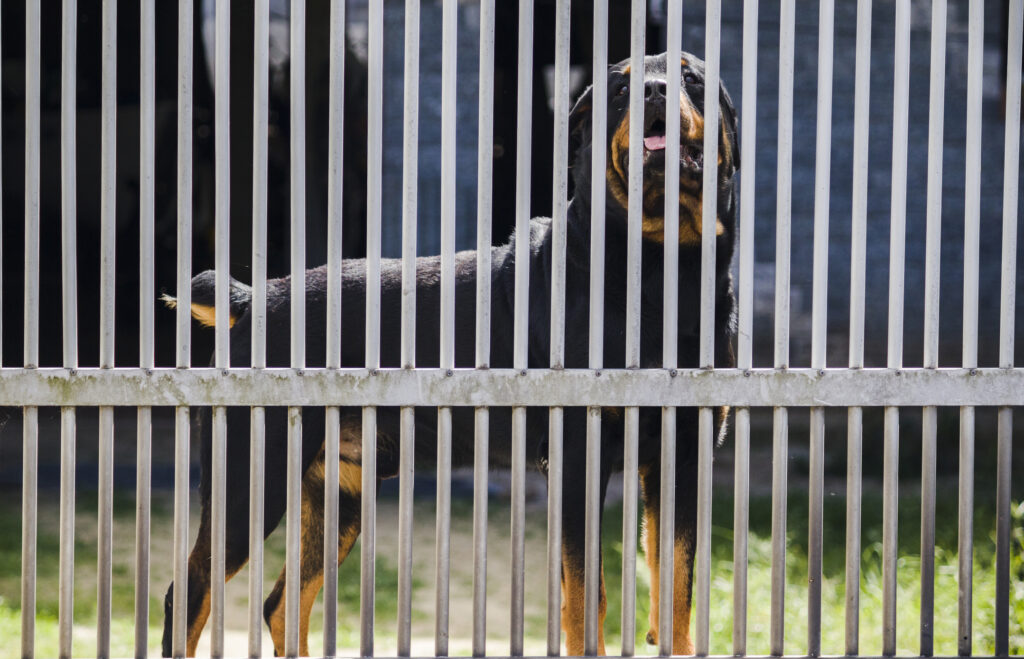Hidden problems shaping dogs long before adoption.

The world of dog breeding can look polished on the surface, filled with photos of healthy puppies and cheerful advertisements. Yet behind many of these images are practices that continue quietly despite decades of warnings from veterinarians and animal welfare groups. Some of these issues remain tucked away out of public view, making it difficult for everyday owners to understand how deeply they affect the dogs they eventually bring home.
As awareness grows, the contrast between responsible breeders and unethical operations becomes clearer. The dogs caught in the middle pay the highest price through lifelong health problems, limited socialization and emotional stress. Understanding these hidden practices allows owners to make informed choices, revealing a reality that becomes more unsettling with each step in the story.
1. Overbreeding females continues far more than expected.

Many female dogs are bred repeatedly with little recovery time, leaving their bodies strained and depleted. Litters arrive in quick succession, pushing mothers through cycles that weaken their immune systems and shorten their lifespan. The toll becomes visible through weight loss, poor coat quality and chronic exhaustion that lingers long after the puppies are weaned.
As the pattern repeats, the mother’s health declines further, creating a ripple effect through every litter she produces. The puppies may face higher risks of developmental issues because their mother lacked the resources to carry them safely. This early harm sets the stage for other practices that cause just as much concern.
2. Breeding stock often includes dogs with known genetic issues.

Some breeders continue using dogs with heritable conditions such as heart defects, hip problems or respiratory challenges. These issues quietly pass down to puppies who later face costly medical treatments or chronic discomfort. The decisions are often driven by appearance standards or convenience rather than long term health.
As these traits spread, entire lines become vulnerable, and new owners are left navigating problems they never expected. The cycle continues unless careful screening breaks it. This genetic pressure blends into the next practice that adds another layer of harm to the breeding world.
3. Puppies are raised in cramped and unsanitary environments.

Many hidden operations house puppies in tight spaces that limit movement and expose them to waste or mildew. Their developing immune systems struggle against these conditions, creating early infections or respiratory issues. The lack of fresh air and proper sanitation affects their behavior as well, making them anxious and slow to adapt.
Over time these puppies face more challenges when introduced to normal homes. Their early environment shapes how they respond to noises, new people and basic routines. These disadvantages trace back to the moment they first opened their eyes, tying directly into the next troubling practice.
4. Early separation from mothers happens far too soon.

Some breeders remove puppies from their mothers before they learn essential social and behavioral skills. The separation interrupts bonding, weakens immunity and disrupts early development. Puppies may struggle with anxiety, biting inhibition or dependence because they missed that critical learning period.
As they grow, these dogs face steeper emotional hurdles during training. They crave reassurance or show unpredictable reactions in social settings. This early disruption follows them into adulthood, revealing how powerful a mother’s presence is during those first few weeks.
5. Poorly managed socialization leaves puppies unprepared.

Breeders sometimes limit puppies to dark barns or storage rooms where they encounter little outside stimulation. This lack of exposure prevents them from learning to process sound, movement or human handling. When finally placed into homes, the world feels frighteningly large and unfamiliar.
Owners may notice hesitation, trembling or avoidance in everyday situations. These reactions reflect gaps in early life experience that cannot be replaced later. The effects blend seamlessly with the next concern surrounding nutrition during early development.
6. Inadequate nutrition affects growth in lasting ways.

Some puppies are fed low quality food or inconsistent meals that fail to meet their developmental needs. Their bones, organs and muscles require balanced nutrients during the first months of life, and without it, long term health issues form silently. Growth may appear uneven or slow, and their immune system often suffers.
Once adopted, these dogs require more careful care and frequent veterinary support. Their early diet becomes a quiet burden they carry into adulthood. This nutritional setback links to the next practice involving selective breeding for extreme physical traits.
7. Extreme features are prioritized over functional health.

Certain breeders focus on exaggerated traits such as flat noses, oversized heads or short legs that appeal to specific trends. These traits may look cute but often compromise breathing, walking or regulating body temperature. Puppies inherit these limitations and struggle through daily activities that should feel simple.
As they grow, the discomfort becomes more obvious. Breathing may become labored during play, or movement may appear stiff or awkward. These limitations reveal how dangerous it is to prioritize aesthetics over the dog’s basic wellbeing.
8. Intentional inbreeding is still used to maintain appearance.

Inbreeding increases the likelihood of passing down harmful recessive genes. Some breeders rely on it to preserve coat colors, shapes or behaviors, ignoring the health consequences. The practice narrows genetic diversity and intensifies conditions that might otherwise stay hidden.
Over time these dogs develop a range of physical and cognitive issues. Their bodies react unpredictably to stress or illness, and their lifespan may shorten as a result. The problems created by inbreeding pave the way for another concern tied to record keeping.
9. Health records are falsified or withheld altogether.

Some breeders provide incomplete or misleading paperwork to disguise problems within their breeding lines. Missing vaccinations, unverified genetic tests or incorrect dates make it difficult for veterinarians to assess a puppy’s medical history. Owners often discover the truth only when symptoms appear later.
As medical information unravels, the dog’s future care becomes more complicated. The lack of transparency exposes how deeply irresponsible breeding practices can affect entire households. This theme continues into the next issue involving temperament.
10. Unstable temperaments are passed down through ignored behavior issues.

Dogs with aggression, fearfulness or compulsive behavior patterns should be carefully evaluated before breeding. Yet some operations continue breeding them without addressing the underlying issues. Puppies inherit these tendencies and struggle socially as they mature.
Owners may find themselves managing unpredictable behavior without knowing its origin. The cycle continues unless breeders commit to prioritizing mental stability. These quiet but powerful influences reveal how much responsibility lies in the choices made long before a puppy meets its new family.
